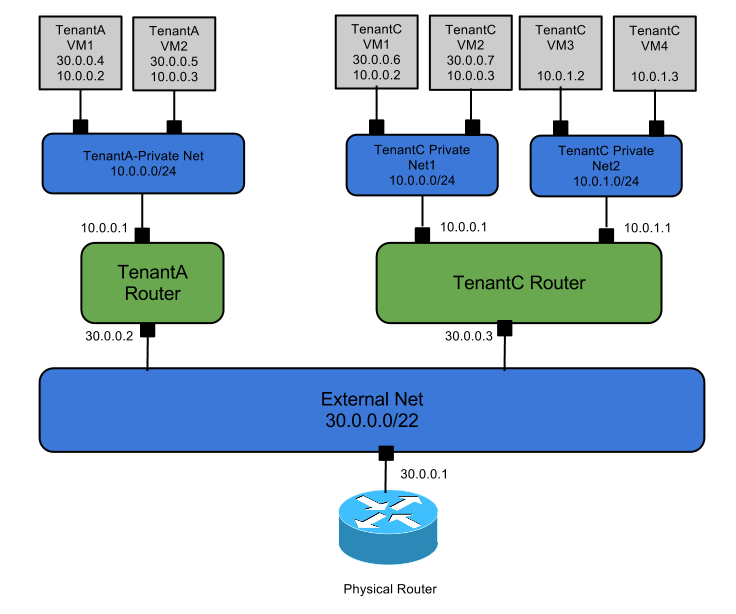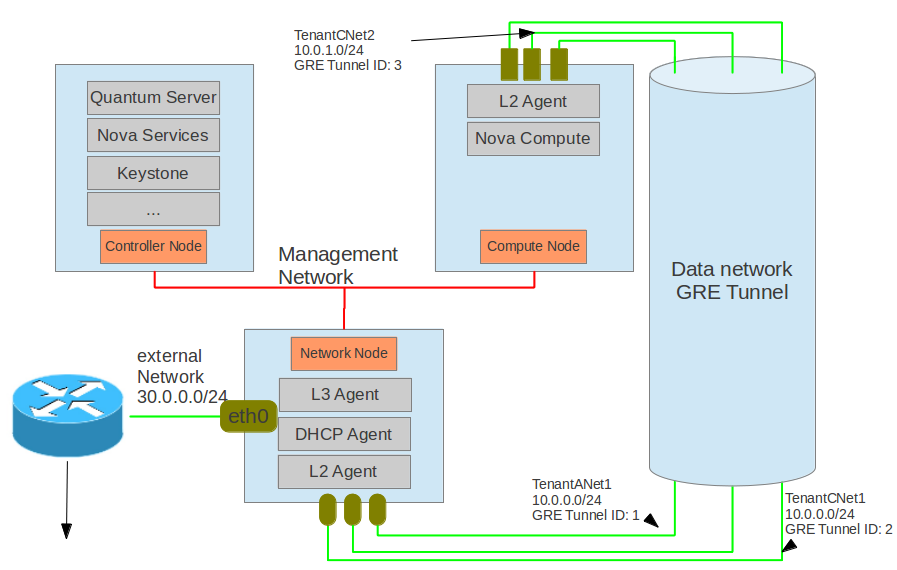This section describes how to install the OpenStack Networking service and its components for a use case that has per-tenant routers with private networks.

The following figure shows the setup:

As shown in the figure, the setup includes:
An interface for management traffic on each node.
Use of the Open vSwitch plug-in.
GRE tunnels for data transport on all agents.
Floating IPs and router gateway ports that are configured in an external network, and a physical router that connects the floating IPs and router gateway ports to the outside world.
![[Note]](../common/images/admon/note.png) | Note |
|---|---|
Because this example runs a DHCP agent and L3 agent on
one node, you must set the
|
This table describes the nodes:
| Node | Description | |||
|---|---|---|---|---|
| Controller Node | Runs Networking, Identity Service, and all
Compute services that are required to deploy
VMs (
|
|||
| Compute Node | Runs the Networking L2 agent and the Compute
services that run VMs (nova-compute specifically, and
optionally other nova-* services depending on
configuration). The node must have at least two
network interfaces. One interface communicates
with the controller node through the management
network. The other node is used for the VM traffic
on the data network. The VM receives its IP
address from the DHCP agent on this network. |
|||
| Network Node | Runs Networking L2 agent, DHCP agent and L3 agent. This node has access to the external network. The DHCP agent allocates IP addresses to the VMs on data network. (Technically, the addresses are allocated by the Networking server, and distributed by the dhcp agent.) The node must have at least two network interfaces. One interface communicates with the controller node through the management network. The other interface is used as external network. GRE tunnels are set up as data networks. | |||
| Router | Router has IP 30.0.0.1, which is the default gateway for all VMs. The router must be able to access public networks. |
The use case assumes the following:
Controller node
Relevant Compute services are installed, configured, and running.
Glance is installed, configured, and running. In addition, an image named
ttymust be present.Identity is installed, configured, and running. A Networking user named neutron should be created on tenant service with password NEUTRON_PASS.
Additional services:
RabbitMQ is running with default guest and its password.
MySQL server (user is root and password is root).
Compute node
Install and configure Compute.

